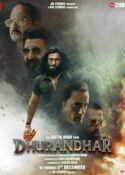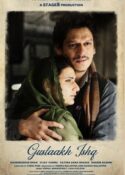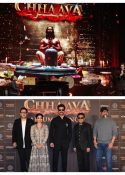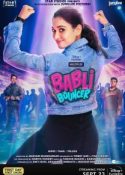 Subhash K Jha has turned his focus to revisit Anurag Kashyap Gangs Of Wasseypur Part 2, which released in 2012 and we hear from star Manoj Bajpayee an out the making of the film.
Subhash K Jha has turned his focus to revisit Anurag Kashyap Gangs Of Wasseypur Part 2, which released in 2012 and we hear from star Manoj Bajpayee an out the making of the film.
Released two weeks after Part 1, Part 2 was even more violent. If you try to count the numbers of bullets that are fired at unsuspecting victims in the ferociously violent world inhabited by Anurag Kashyap’s trigger-happy goons, you might end up cross-eyed. Caught in the crossfire of vendetta and redemption the characters of Gangs of Wasseypur 2 are so on-the-edge they don’t fear the abyss that awaits them at the end of their vengeful voyage.
In any case, no one in Kashyap’s God-forsaken kingdom takes cops seriously, not even the cops themselves. There’s a typically wry Kashyap joke just before interval when the raging protagonist Faizal(or ‘Faijal’, as everyone including his sexy wife calls him) carries his kid-brother’s corpse home. Cops stop Faizal and politely ask him to accompany them to the police station.
“Don’t you see I’m taking my brother home?’ Faizal bellows.
“We understand,” squeaks a khaki-clad gentleman. “Why don’t you hand over the body to us and come with us?”
This, if you are familiar with the language of commercial Hindi cinema, is in character with the image of the filmy police force.
It always arrives late. Or untimely. Kashyap crams in-house jokes into every nook and cranny of this diligently-constructed, breathtaking ode to the culture of street violence. The gang wars are so so real that they are unreal. Does that make sense? It had better! That so-real-that-it’s-unreal tempestuous twilight zone is where Kashyap’s film belongs. The violence of the politically corroded North Indian town(Wasseypur , or what you will)is exaggerated to a point of utter outrageousness. In Kashyap’s version of the Wild West, you could get killed on the spot for anything, for asking the time or raping your neighbour’s sister. The price for any crime, petty or grave, is the same.
The ceaseless shower of bullets gets a hand-up on the visceral soundtrack from Sneha Khanwalkar excruciatingly evocative folk songs of Bihar (some of which are used in two versions, ironical or poignant, but always intensely definitive) and with excellent use of the puerile film songs of the 1980s which used to be out on the T Series label back then when music piracy was as rampant as political hooliganism.
Even when the epic narration moves into the 2000 millennium the characters are stuck in the 1980s. A whole thesis can be written on the interesting caller tunes from the 80s and 90s used by the characters in their mobile phone. And yes, there is Yashpal Sharma, the resident stage singer of Wasseypur, crooning a 1980s song for every occasion. While the funeral of two of the key characters is on, Yashpal’s earnest attempt at musical expression soars into ‘Yaad teri aayegi mujhko bada sataayegi’ and ‘teri meherbaniyan’…tracks that seem to unintentionally mock the solemnity of the occasion. The latter was actually sung in the film at the death of a canine.
The ceaseless violence is quite often savagely funny. The series of miscommunication and misinformation among the assassins when Sultan Qureshi (Pankaj Tripathi) is to be gunned down in a crowded market, is straight out of a comic-action films from the 1980s.
When Kashyap is not paying tongue-in-cheek tributes to an era from Hindi cinema that seems to repeatedly define the lives of the film’s characters , the director is busy taking digs at his own brilliantly crafted homage to gangsterism.
In one sequence, an assassin asks his intended victim for the address on a visiting card.
“No , this is Dhanbad. The address you want is in Varanasi,” says the helpful man before he’s gunned down in the crowded bazaar.
For the record, the Gangs Of Wasseypur marathon is located in the Dhanbad belt but had to be shot in Varanasi.
There are funny scenes of violence, tragic scenes of violence, and tragic-comic scenes of violence. But violence, let us reiterate , is a constant in the lives of the characters as they stumble, fall, attack, kill, or get killed in this blood-soaked, bullet-ridden saga of gangsterism, which makes Coppola’s Sicily look like a holiday resort.
More fast-paced , furious, frenzied, and frenetic than the first part Gangs Of Wasseypur 2 confidently occupies that semi-feverish space where dream, nightmare, and reality play a savage hide ‘n’ seek with your sensibilities. The performances are tactile and dramatic. Nawazuddin Siddiqui as the ganja-zonked proūntagonist delivers the deadliest performance in Kashyap’s gang as the most swaggering mercurial gangster on this side of James Caan in The Godfather. Richa Chadda as his mother portrays the simmering intensity of a passion whose flames won’t die down with old age. During a family wedding, when Chadda, while singing a wedding song, breaks down and then regains her composure, she proves she’s no ordinary actress. Let’s not undermine Huma Quereshi’s saucy turn as the love of Nawazuddin’s constantly-endangered life, just because she’s hot and glamorous. Huma scorches up the screen with her casual vibrancy.
There are as many remarkable actors in this film as there are corpses scattered with scary casualness all across the lengthy saga. Mention must be made of young Aditya Kumar as Faizal’s kid-brother Perpendicular, who uses razor blades for everything except shaving, and Zeishan Quadri (the absolutely amazing co-writer of this saga) as Definite, Faizal’s half-brother. He looks ordinary. He is dangerous. Interesting parallels are drawn in the relationship between the half-brothers Faizal and Definite in this film and Amitabh Bachchan and Shashi Kapoor playing half-brothers in Yash Chopra’s Trishul.
These are filmy people who choose to replace the ketchup in the action films of the 1980s with real blood. But their emotional ties seem to hinge precariously on the logistics of commercial mainstream cinema.At the end of the first Wasseypur, Manoj Bajpai’s character was showered with bullets. At the end of the second and concluding part of the blood-fest, Nawazuddin Siddiqui is gunned down mercilessly by the people whom he depends on. When you live by the gun, you die by the gun. Unless Anurag Kashyap decides to bring you back to life. Then you are in serious trouble.
Recalling the experience of shooting of Gangs Of Wasseypur Manoj in an exclusive interaction says, “When Anurag Kashyap showed me the final edit, that was the time I realised that we have something very unique, something that audience is going to talk about for a very long time because there was nothing about it that could be compared with anything else.”
Manoj recalls floating in midair after seeing the final edit of Gangs of Wasseypur. “I was quite excited. I went home. I still remember that; I went home, giggling inside somewhere. I felt that whatever we set out to do, we achieved a lot in terms of the craft. And also, the collaboration has really managed to pull off something that was looking impossible and so difficult.”
Manoj singles out his costars for praise. “I had a chance to get introduced to such great talents like Richa Chadha, Huma Qureshi, Zeishan Quadri…Pankaj Tripathi, I’ve known very closely. Then Vipin Sharma was there. Vipin, I’ve known for a long time, from my theatre days. Tigmanshu Dhulia, I was meeting after a long time. And also, it was great to see Nawazuddin creating magic. Huma with him was quite a revelation. And Richa was working with me, and she had so many scenes. It has been an unforgettable experience and all of those people who worked, they are still very good friends. And all of us take great pride, not only in the film but also in the manner we have really gone ahead and really managed to pull it off.”
Interestingly, Manoj Bajpayee did not speak to Anurag Kashyap for eighteen years due to a misunderstanding during the shooting of Gangs Of Wasseypur. Manoj was so furious with Kashyap that he had chased him down with a stone in his hand.
Says Manoj. “The shoot itself was very difficult. Too many incidents happened which can only be written in a book. It can’t be part of an interview.”








